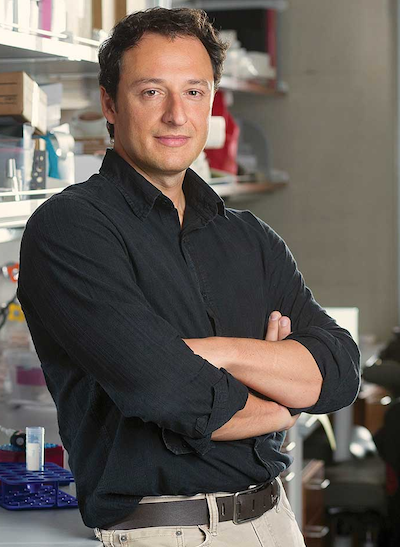Stories of Hope: Autism

One of the most complex aspects of autism is that it is not one disease—but many. Known more accurately as the autism spectrum disorder, or ASD, experts have long been trying to tease apart the various ways in which the condition appears in children, with limited success.
But now a new kind of stem cell is helping unlock some of the secrets behind ASD and offer clues as to potential new treatments. And it’s all thanks University of California at San Diego researcher, Dr. Alysson Muotri, and the Tooth Fairy.
The new kind of cell is called an induced pluripotent stem cell or iPSC. It’s made by scientists transforming ordinary skin cells back into embryonic-like stem cells, after which they can be coaxed into maturing into virtually any type of cell in the body. It’s a promising way of creating a human model of diseases like autism at the cellular level. But in order to truly understand what is happening in the brains of people with autism, Dr. Muotri and his team needed samples from children with ASD and children without, hundreds of samples!
That’s where the Tooth Fairy Project came in. In the project, parents register for a “Fairy Tooth Kit” that lets them send a discarded baby tooth from their child to researchers. Housed within each baby tooth are cells that can be transformed—with iPSC technology—into neurons, the nerve cells in the brain affected by ASD. This process gave the researchers a massive collection of baby teeth from children with and without ASD to study.
Starting with the very first tooth sent to Dr. Muotri, the team were able to identify genetic mutations never previously seen. Specifically, the team identified a mutation in a gene called TRPC6 that was present in children with autism but not in non-autistic children. Additional experiments in animal models revealed that the TRPC6 mutation was indeed associated with abnormal brain cell development and function.
And for their next trick, the team found a way to reverse the mutation’s damaging effects.
“Interestingly, while studying TRPC6, we realized that a molecule found in Saint John’s Wort, hyperforin, could stimulate the functional TRPC6,” says Dr. Muotri. “Normally, everybody has two copies of this gene, but because of the mutation, this autistic kid had only one functional copy. Since the individual still has one functional TRPC6 gene copy, it seemed reasonable to test if hyperforin treatment could compensate the mutation on the other copy. It did. A treatment with hyperforin for only two weeks could revert the deficits on the neurons derived from that autistic boy. More exciting is the fact that the family agreed to incorporate St. John’s Wort on his diet. We have anecdotal evidence that this actually improved his social and emotional skills.”
More recently the team have been using iPSCs and genome editing techniques to create brain organoids or mini-brains in the lab. These are essentially 3D models of ASD that enable the team to compare the structure and function of mini-brains generated with cells from children with ASD to children without ASD. They have now identified 14 different drugs that may help treat some autism symptoms.
The team are also exploring the possibility of using stem cells to create “brain avatars” of ASD individuals in the lab. Dr. Muotri says this is very exciting. “I can imagine every baby having their “brain avatar” analyses done in the lab, eventually pointing out “red flags” on the ones that failed to achieve neurodevelopment milestones. If we could capture these cases, way before the autism symptoms onset, we could initiate early treatments and therapies, increasing the chances for a better prognostic and clinical trajectory. None of these would be possible without stem cell research.”
